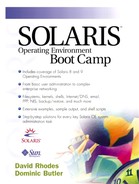Choosing an IP Address
Now that we know the range of addresses that are available, does it matter which one we use? Well, that depends upon how the systems are connected, as we hinted at earlier. The reason is that every system directly connected to a public network (such as the Internet) must have an individual IP address that doesn't conflict with any other. Some companies simply pick a range at random; others may use one they know belongs to someone else, safe in the knowledge that the two will never clash (always a dangerous practice!).
Both these methods are fine in theory, but problems can occur if, for example, someone connects the system and forgets to alter its address. Another method is to use a “reserved” address.
Reserved Addresses
A number of addresses have been reserved for use in private networks where the systems will not be directly connected to an external network. However, they do carry some restrictions; for example, any routers that receive packets from one should reject them without producing errors and shouldn't propagate the private address information around the network. This ensures that anyone can use these, safe in the knowledge that should a system be accidentally connected to a public network, it won't cause any problems to anyone else.
The reserved addresses are shown in Table 11.8 and are displayed in CIDR format. The recommended method for choosing an address range to use is to simply select one at random.
| Address | Equivalent Class | Number of Subnets | Address Range | Max Number of Available Addresses |
|---|---|---|---|---|
| 10.0.0.0/8 | A | 1 | 10.0.0.0–10.255.255.255 | 16,777,214 |
| 172.16.0.0/12 | B | 16 | 172.16.0.0–172.31.255.255 | 1,048,574 |
| 192.168.0.0/16 | C | 256 | 192.168.0.0–192.168.255.255 | 65,534 |
